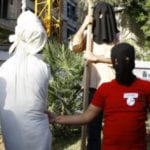 Weird Stuff
Weird Stuff  Weird Stuff
Weird Stuff  Our World
Our World 10 Archaeological Discoveries of 2025 That Refined History
 Weird Stuff
Weird Stuff 10 Fascinating Facts You Might Not Know About Snow
 Miscellaneous
Miscellaneous Top 10 Things Crypto Was Supposed to Change & What Actually Did
 History
History 10 Huge Historical Events That Happened on Christmas Eve
 Music
Music 10 Surprising Origin Stories of Your Favorite Holiday Songs
 History
History 10 Less Than Jolly Events That Occurred on December 25
 Weird Stuff
Weird Stuff 10 Funny Ways That Researchers Overthink Christmas
 Politics
Politics 10 Political Scandals That Sent Crowds Into the Streets
 Weird Stuff
Weird Stuff Ten Bizarre Facts About The Doge Meme
 Weird Stuff
Weird Stuff 10 Weird Things People Used to Do at New Year’s
 Our World
Our World 10 Archaeological Discoveries of 2025 That Refined History
 Weird Stuff
Weird Stuff 10 Fascinating Facts You Might Not Know About Snow
Who's Behind Listverse?

Jamie Frater
Head Editor
Jamie founded Listverse due to an insatiable desire to share fascinating, obscure, and bizarre facts. He has been a guest speaker on numerous national radio and television stations and is a five time published author.
More About Us Miscellaneous
Miscellaneous Top 10 Things Crypto Was Supposed to Change & What Actually Did
 History
History 10 Huge Historical Events That Happened on Christmas Eve
 Music
Music 10 Surprising Origin Stories of Your Favorite Holiday Songs
 History
History 10 Less Than Jolly Events That Occurred on December 25
 Weird Stuff
Weird Stuff 10 Funny Ways That Researchers Overthink Christmas
 Politics
Politics 10 Political Scandals That Sent Crowds Into the Streets
 Weird Stuff
Weird Stuff Ten Bizarre Facts About The Doge Meme
10 Absurdly Outnumbered Underdogs Who Won
The idea of a plucky underdog fighting his way to victory is common in stories, but that’s not how war really works. In the real world, whenever a bunch of plucky heroes try to make up for a lack of numbers and equipment with sheer heart, they tend to get brutally ripped apart by the guys who remembered to bring tanks and guns and a whole bunch of well-trained friends. And that’s how it always happens—except in these instances.
10 The Germans vs. Tannenberg (1914)
Odds 3ish:1
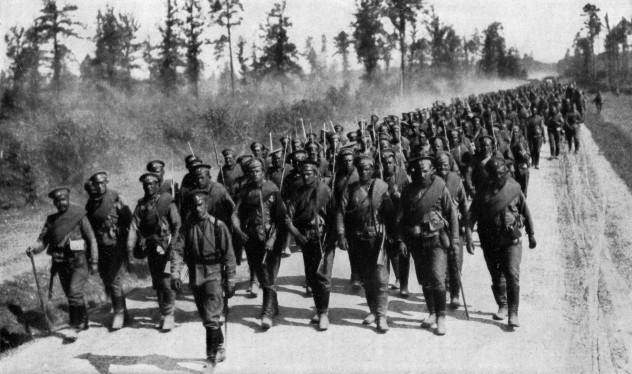
To kick off World War I, Germany rolled the dice and sent its whole army to the Western Front to attack the crap out of the French. Not a bad idea since the Germans assumed they could knock the French out in a few weeks and then head back east and face the real threat, Russia. Germany assumed it would take at least a few months for Russia to mobilize its endless supply of soldiers/cannon fodder and march on Berlin. Eight days later, 400,000 Russian soldiers marched into North Germany.
The only thing guarding Germany’s back door to Berlin was its 8th Army, which consisted of less than 200,000 men. Things went from, “Uh oh,” to “Oh god, no,” in a hurry for the Germans when the Russian army forced 80,000 German soldiers to retreat.
Thankfully for Germany, the Russian force was split into two armies separated by hundreds of miles. More importantly, Russia sent all of its recon planes to the western front. In a pattern consistent with Russian history, the Russian Army began groping about the North German forest with almost no idea of where the enemy lay.
Instead of retreating farther, the Germans left a dummy force in the north and the bulk of their forces surprised the southern half of their enemy, which was spread out in a disorganized line 60 miles long (remember the groping?). German machine guns appeared out of nowhere and did terrible things for Russian morale: some 200,000 Russians fell into a panic. The Germans annihilated the southern half of the Russian force and evened the odds, setting the stage for the grueling stalemate to come.
9 Byzantines vs. Vandals At Tricamarum (533)
Odds 3ish:1

Here’s all you need to know: the Vandals, a tribe of Germans who did some serious migrating, ruled a valuable chunk of North Africa from their base at Carthage (today, Tunis). The Eastern Roman Empire (also known as the Byzantines) ruled a valuable chunk of Eurasia from their capital, Constantinople (today, Istanbul) located in what is now Turkey. Simple, right?
The Byzantines wanted to restore the glory of the Roman Empire, and in 533 that meant owning the port at Carthage. As an added incentive to attack, the Vandals were the wrong kind of Christian.
The Byzantines, ever stingy bastards, sent just 15,000 soldiers with the general Belisarius to attack Carthage and reconquer North Africa. Belisarius had no problem taking Carthage since the Vandals weren’t home, but boy, were those Germans pissed when they returned from their raiding.
Forty-five thousand Vandals assembled near Carthage. Due to the dwindling loyalty of his mostly mercenary army, Belisarius abandoned Carthage and attacked the Vandal camp. The Vandal lines dwarfed the Byzantines, and things were shaping up for a legendary cavalry battle.
What a letdown! After the first Byzantine charge, the Vandals learned the hard way that a general who leads from the front is highly susceptible to stabbings. The general-less Vandals dispersed after suffering just 800 casualties, while their king ditched North Africa and handed over the kingdom to the Byzantines and their fun-sized army.
8 Swedes vs. Russians at Narva (1700)
Odds 4:1
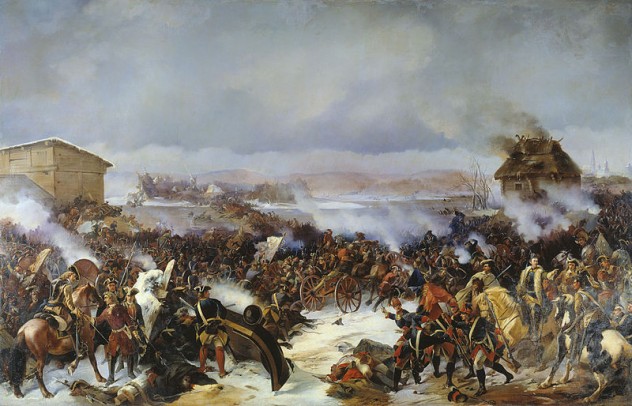
You may have heard of a city called St. Petersburg. It’s apparently a big deal in Russia. What you may not know is that until 1703, the land St. Petersburg occupies actually belonged to the Swedish Empire.
Peter the Great, the Russian Czar, was desperate to gain access to the Baltic Sea. The Swedes possessed little to no desire to give up their highly profitable sea ports—a conflict of interests if we ever heard one. Russia, never a stranger to delicate political negotiations, decided to solve this particular problem with cannons. Lots of cannons.
So, in 1700, Peter the Great and his army of 35,000 troops surrounded the Swedish coastal fortress of Narva. Narva, being the gateway to the Gulf of Finland, was quite the prize (just trust us on that one). Peter had no trouble encircling the city with his massive army and was content to lob cannonballs at Narva’s inhabitants until everyone inside starved or surrendered.
It was a brilliant plan, but Swedish Emperor Charles arrived with all of 8,000 troops (well-trained, but still, not very many).
Despite being outnumbered four to one with the Russian army entrenched around the city, Charles chose to attack. Before the Swedes could throw themselves against the Russians, a blizzard swept in and prevented both forces from maneuvering. Sometime in the afternoon, the wind shifted and drove the snow directly into the Russian lines, obscuring their vision. Charles ingeniously recognized the advantage of attacking an enemy who is essentially blind and quickly woke his men up.
Thanks to the near white-out conditions, Charles’ 8,000 troops marched on the Russians completely undetected. By the time the Russian soldiers realized what was happening, they were full of Swedish bayonets. The Swedes killed, wounded, or captured the entire Russian army at Narva.
Charles’ only mistake? Mercy. He allowed his 20,000 Russian prisoners to take the march of shame back to Russia, and three years later, Peter the Great returned with those men, conquered Sweden’s Baltic provinces, founded St. Petersburg on those very lands, and entered Russia into the Baltic Sea trade—which powered the nation’s future military expansions.
7 The Great Siege of Malta (1565)
Odds 5:1
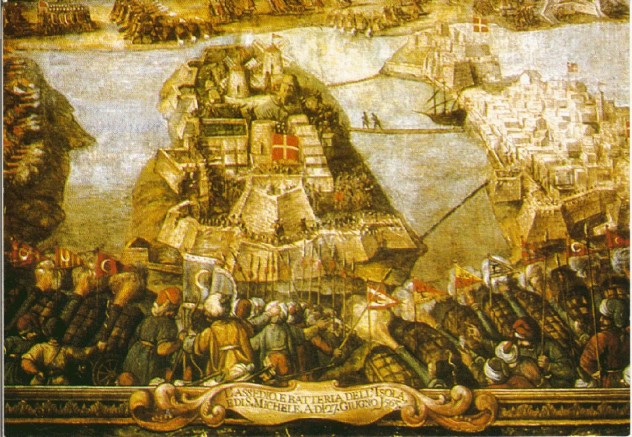
The Knights Hospitaller shared a lot in common with the Templars, but instead of giving up on the Crusades and being wiped out by a French King in 1312, the Hospitallers moved from island to island in the Mediterranean and continued fighting whatever Muslims they could find well into the 17th century.
The nearest Muslims to the Knights’ base on Malta were the Ottoman Turks. The Ottomans, back then, controlled just about everything along the Mediterranean Sea except Italy, France, and Spain—none of which stopped the Knights from attacking every Ottoman ship possible.
So, the Ottomans sent an armada and nearly 50,000 men to take the fortress on Malta and kill the few thousand knights and civilians inside. Big mistake for the Ottomans.
Here’s a lesson from history: never besiege a city ruled by a man named Jean who loads his cannons with his prisoners’ heads. Chief Knight Jean Valette didn’t even blink when the Ottomans overran Malta’s outer fortifications and killed 1,500 Maltese. For weeks, the Ottomans rained thousands of cannonballs on Valette and his defenders. When the main walls were finally breached, Ottoman soldiers poured into the fort, expecting little resistance.
Instead, the Ottomans found Valette and a few hundred of the best knights in the history of sword swinging. They were a little rusty, maybe, but more than capable of slicing their way through a few thousand Turks in the narrow breach. After four months, the Ottomans still couldn’t take Malta and lost 10,000 of their comrades.
When a relief force of 8,000 Christian corsairs arrived off the coast of Malta, the Ottomans finally had an excuse to retreat and leave those crazed Knights to their Hospitalling. And those Maltese hospitals were full, because the defenders suffered close to 100 percent casualties.
6 Klushino (1610)
Odds 5:1
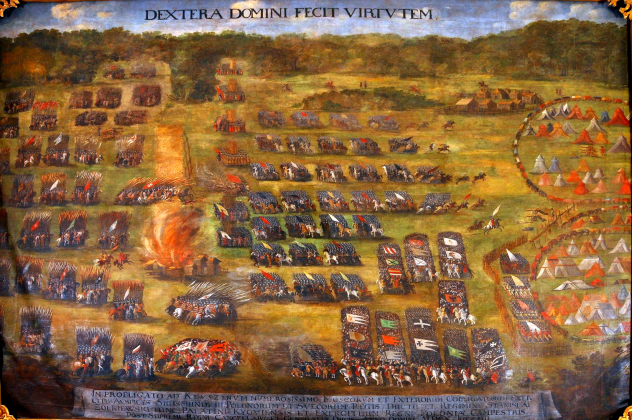
Poland wasn’t always just a place waiting to be invaded. In the early 17th century, the Polish Commonwealth decided to do a little conquering and land-grabbing of its own. And who better to grab land from than the conveniently civil-war-wracked Russia?
Despite having lots of land, the Russians refused to share, and allied with the Swedes to save beautifully named cities like Smolensk—which the Polish were in the process of besieging. Before the 30,000-strong Swedish/Russian contingent could play Prince Charming to Smolensk’s damsel in distress, 5,500 Polish cavalry stood in their way. The Russians weren’t quite sure how big the Polish force was, because it was nighttime when Polish scouts stumbled into the Russian/Swedish camp like drunks on horseback looking for the bathroom in a dark bar.
Since these were chivalrous days, each army took time to prepare its forces for a dawn battle. The Russians built a palisade, while the Polish cavalry presumably spent all night sharpening their swords.
The battle that ensued tested two very different tactics: the Russian cavalry favored prancing right up to the Polish lines, firing their pistols, and riding to the back of their formation to reload while the next rank of cavalry fired, a strategy called “caracole.” It sounds brilliant, except guns in 1610 were wildly inaccurate, assuming they fired at all.
The Poles’ strategy can be best summarized as “charging at everything, hacking people with swords, and stabbing everything all the time, always.” After routing the Russians with their pathetic “guns,” the Poles turned their charging, hacking, and stabbing on the Russian/Swedish infantry, most of whom were mercenaries and not feeling quite up to the “hacking.”
To stop the slaughter, the Swedes and Russians surrendered in their own camp. The Poles got their land and helped briefly popularize the phrase “never bring a gun to a sword fight.”
5 The Battle Of Watling Street (61 A.D.)
Odds 10:1
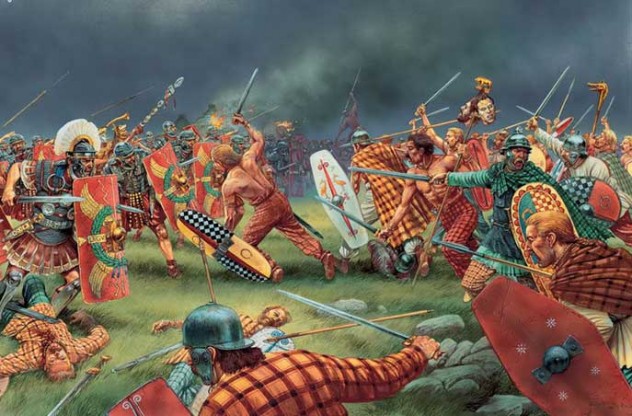
In 61 A.D., the recently conquered Britons united under Queen Boudica and decided to overthrow their new Roman overlords. The Roman governor Gaius Paulinus couldn’t afford to wait for things like reinforcements or an actual army to arrive from Rome.
So Paulinus made a like a good Roman and did the best with what he had. The best Paulinus had? Two legions, amounting to just 10,000 men.
Paulinus knew the Britons outnumbered him, and used their overconfidence to draw them into battle on a narrow field flanked by dense forest. The overconfident Britons ignored the fact their enemy was positioned at the base of a literal funnel, and brought their families along in an enormous wagon train that they left just behind their lines.
Paulinus’ legions weren’t exactly thrilled at facing a force of 80,000 screaming warriors. But the Romans’ funnel-like position prevented the Britons from overrunning the Roman shield line. Most of the massive Briton force had to wait in line to close with the Roman ranks. And while they waited to get in melee range, the Romans’ rear ranks poured javelins into the mass of lightly armored Britons. Paulinus subbed out his front line like a hockey coach, so the few Britons who actually got close enough to engage always faced fresh legionnaires.
The Britons tried to retreat, only to be trapped by their own wagon train. The Romans methodically closed in like a slow-moving pointy metal wave and killed everything they could stab.
4 Tigranocerta (69 B.C.)
Odds 10:1

Estimates vary, but it’s probably a safe bet that the Roman general, Lucullus, had more than 10,000 troops in this battle and the Armenian King, Tigranes, had fewer than the 300,000 troops ascribed to him by ancient writers.
Even so, it seems Lucullus invaded Armenia with an underwhelming force. Fortune and glory were on Lucullus’ mind—that, and something about punishing Armenia for offering asylum to Rome’s enemies, but mainly glory.
The Armenians were still building the city of Tigranocerta when Lucullus rolled in with a few legions and surrounded the city.
Tigranes came shortly after to save his city, and after sending Lucullus some serious trash-talk, showed up behind the Roman army with cavalry, archers, and heavily armored infantry totaling 100,000 or more.
Since most of his numerically superior forces were lightly trained peasants unused to military service, Tigranes relied primarily on his heavy infantry. Neither numbers nor heavily armored infantry holding a superior (hill) position fazed Lucullus. Instead, the general waded across the river separating the two armies, forgot caution, and led his small force uphill and directly against Tigranes’ strongest point. Tigranes’ elite infantry broke under Lucullus’ concentrated force while the rest of the Armenian force made for the nearest exit, which turned out to be slaughter via Roman sword. Never tell a Roman he doesn’t have enough soldiers.
3 The British Steal India At Plassey (1757)
Odds 15:1
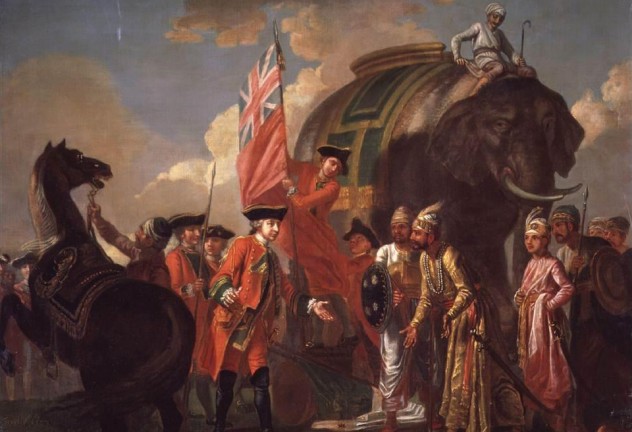
Plassey is a testament to both British resolve and treachery (mainly treachery). The Bengali king, Siraj ud-Dauah, probably should have guessed something was up when his 40,000 troops backed by French artillery failed to intimidate the tiny expeditionary force of 2,500 British and Indian soldiers arrayed against him.
Not long after the two sides started bombarding each other, a torrential downpour interrupted the action. Only the British moved quickly enough to cover their artillery and gunpowder. Once the storm passed, Siraj’s army charged, assuming the British weapons had been soaked as well.
The storm of musket fire and cannonballs leveled the attackers, helping convince Siraj and his few loyal guards that this was not their day. When his generals advised retreat and withdrew along with thousands of troops, the king really got the picture.
Turns out the British weren’t sweating at all, because their head honcho, Lord Clive, bought the Bengali army’s paymaster, Mir Jafar in advance. With control of his enemy’s purse strings, Lord Clive knew Plassey was a slam dunk. The old king beat a hasty retreat and the British crowned the perfectly agreeable Mir Jafar. And thus, nothing but happiness, equality, and the British, ruled India for centuries to come.
Right?
2 100 Aussies Hang Tough At Long Tan (1966)
Odds 20:1
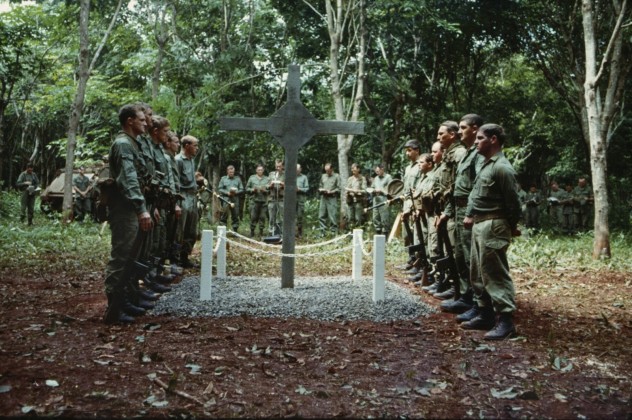
Imagine Black Hawk Down, but in a Vietnamese rubber forest. And instead of 123 US soldiers, 108 Australian soldiers were surrounded by over 2,000 Vietcong.
After the Australian base at Nui Dat came under heavy Vietcong mortar fire, several companies headed out to search for their attackers’ location. The last to patrol, D Company, didn’t find the mortar squad; they found an entire VC regiment with one objective: convince the Aussies to go home.
The Vietcong poured heavy machine gun fire into the rubber trees that D Company was moving through. Monsoon rains limited visibility, as D Company struggled to assume something resembling a defensive position. In the process, one Aussie platoon stumbled onto the flank of a Vietcong assault force, which soon became a “retreat force” when the Australians opened fire.
The next hours were spent in shallow foxholes, exchanging machine gun fire with a massive enemy often out of sight. D Company was down to its last 100 rounds, when an RAAF helicopter finally broke orders and flew through the rain and machine gun fire to deliver ammunition.
The Vietcong assaulted the defenders in waves, until reinforcements arrived forcing the Vietcong to abandon the siege. Hundreds of Vietcong lay dead on the battlefield. The Australians suffered 17 dead and 19 more wounded, which gives you a really good idea of why the Vietcong really wanted to get rid of the Australians.
1 The Battle Of Muret (1213)
Odds 25:1

Remember that bit about “the wrong kind of Christian?” That’s how we ended up with French knights crusading against their French and Spanish neighbors who worshiped God improperly.
A combined force of Aragonese and heretical Christians (over 30,000 troops strong) thought they had those uppity Crusaders trapped in the town of Muret. The 900 French knights and 700 infantry within Muret had a plan, though.
The French knights, led by Simon Montfort, waited for the attackers to breach the main city gate. As the Aragonese troops rushed into the town, Montfort’s knights left via a side entrance, feigning a cowardly retreat. Using the terrain as cover, Montfort led his cavalry behind the distracted besiegers and charged into the siege army’s flank, cutting down the king of Aragon immediately.
With their king dead, the bulk of the Aragonese fell into disarray. Remember—just moments earlier, they thought the battle was won. Montfort’s tiny band of knights ran down the Aragonese by the thousands, as the heretics went from besiegers to spear fodder in a matter of moments. Montfort and his 900 knights inflicted almost 20,000 casualties during the Aragonese attempts at retreat.



